I was early in September by trying to locate a climax run in PTR in this post:
Petrochina (PTR) Climax Top?
However, the HUGE volume on the latest push to new highs clearly indicates something is going on.
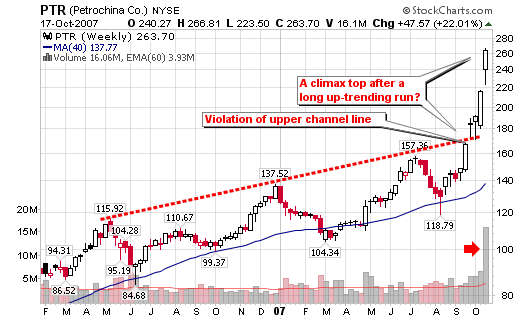
As I mentioned in the last post, a climax top is where the stock has advanced for many months and suddenly races up for one or two weeks much faster than any prior one-or two-week period or since the beginning of the stock’s long move up.
And the stock does this on the largest volume of the run (something that didn’t qualify in my September post at $181). PTR finally has the extreme run with large amounts of accompanying volume. I do advise selling into this incredible strength, especially since Warren Buffett has sold most if not all of his holdings in Petrochina as documented in the SEC filings.
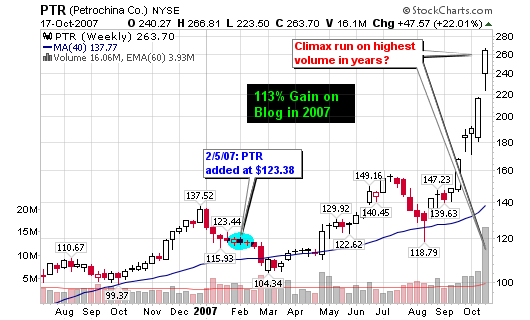
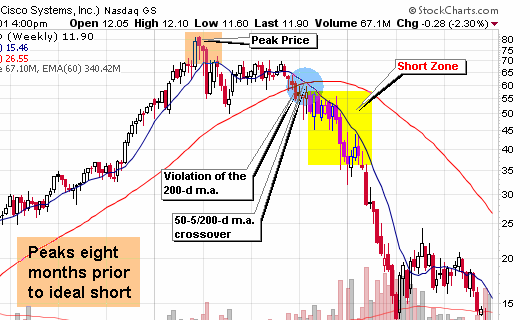
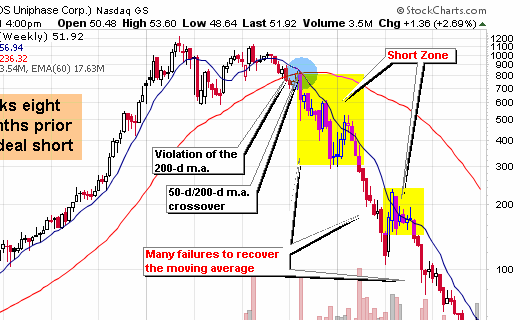
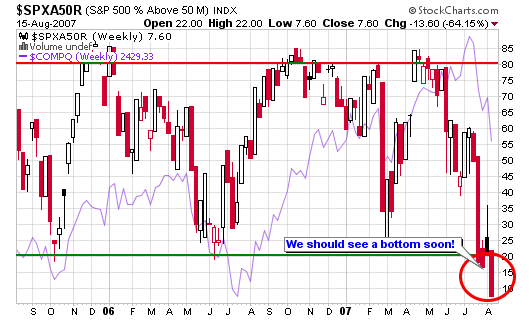
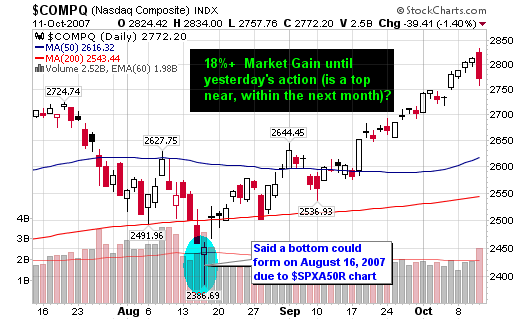
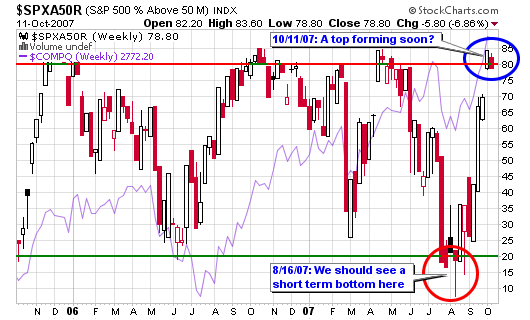




Connect with Me